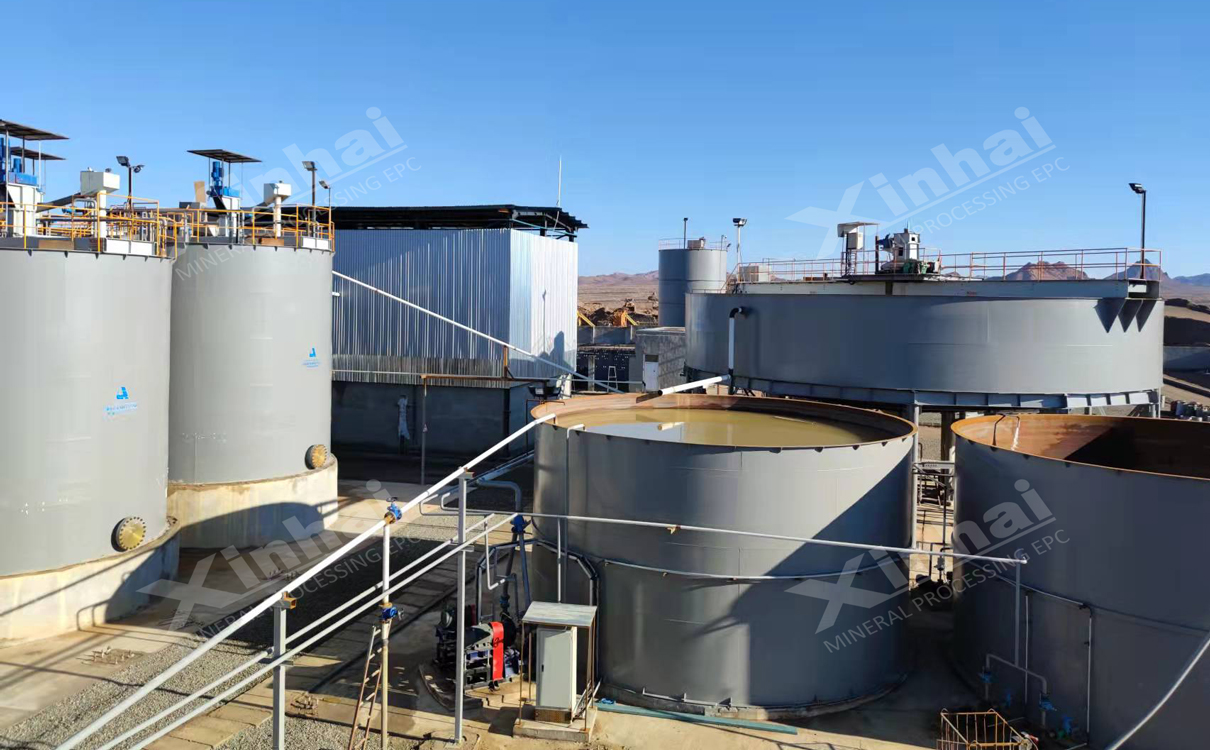
Carbon‑in‑Pulp (CIP) is an established, efficient method for recovering gold from cyanide-leached slurry. It works best on low-grade and oxidized ores, flotation tailings, and gravity-tailings due to its simplicity and low capital cost
High gold recovery (>90%) for fine and low-grade ores
Lower investment than flotation or heap-leach plants
Modular and scalable for expansion
Uses cyanide — must maintain pH \~10.5–11.5 and manage effluents;
Not ideal for high-copper ores; CIL or flotation may be better

| Stage | Description |
|---|---|
| Ore crushed (<28 mesh), then milled (~75 µm) to liberate gold |
| 2. Leaching | Pulp mixed with 0.01–0.1% sodium cyanide and oxygen in agitated tanks; 24–72 h contact time |
| 3. Carbon Adsorption | Activated carbon is added in counter-current tanks; gold-cyanide complex binds to carbon |
| 4. Desorption & Electrowinning | Gold is stripped from carbon with hot caustic/cyanide, then recovered via electrowinning |
| 5. Smelting | The cathode mud is dried and smelted to produce gold bullion |
| 6. Carbon Regeneration | Activated carbon is treated to restore adsorption capacity |
| 7. Tailings & Waste Management | Spent pulp undergoes detoxification, filtration, and safe disposal |
Leach & adsorption circuits: 5–8 tanks with agitators
Screens & cyclones: Remove gangue and regulate pulp density
Desorption units: Pressure- or heat-enhanced tanks
Electrowinning cells: For gold recovery
Smelter furnace: Converts cathode mud to bullion
Automation & controls: Modern systems enhance recovery and safety (e.g., Xinhai Mining’s smart modules)
Cyanide concentration: 0.01–0.1%, adjusted per ore type
pH control: Maintain 10.5–11.5 to prevent HCN formation
Oxygen levels & agitation: Crucial for cyanide efficiency
Residence time: Balanced for cost vs recovery
Carbon selection & screening: Size/grade critical for adsorption rate

Cyanide detoxification: On-site treatment to meet safety standards
Tailings handling: Includes filtration, solidification, and freeing heavy metals
Wastewater treatment: Includes filtration, chemical neutralization, possible heavy-metal removal
Cost evaluation: CIP offers low CAPEX; smart designs (e.g., steel structure plants) reduce build time/money
CIP leaches first, then adsorbs — simpler, flexible, but slightly slower
CIL combines adsorption during leach — faster, often higher recovery; better for low-resistance ores
CIP is a proven, flexible method for gold recovery from low-grade, oxidized, or tailing ores. When correctly designed and controlled, it delivers high recovery with modest capital cost. For best outcomes:
1. Optimize comminution and reagents
2. Implement robust pH, cyanide, oxygen controls
3. Ensure effective carbon handling and regeneration
4. Prioritize cyanide detox and tailings safety
5. Evaluate whether CIP or CIL suits your ore and throughput needs
Let’s be real—chrome wash plants aren’t exactly cocktail party conversation, but they’re kinda the unsung heroes behind your kitchen knives, car parts, and that shiny fridge you’ll never clean. These things basically take raw chromite ore (yeah, the FeCr₂O₄ stuff) and turn it into the good stuff stainless steel manufacturers drool over. With the world’s appetite for ferrochrome growing (blame your neighbor’s new appliances), everyone’s scrambling to build smarter, cheaper chrome processing setups. South Africa and Rustenburg? Heavy hitters in this game.
Mobile jaw crushers are self-contained, high-performance units designed for primary crushing in open‑pit mines, construction, recycling, and foot-of-pit gold operations.
